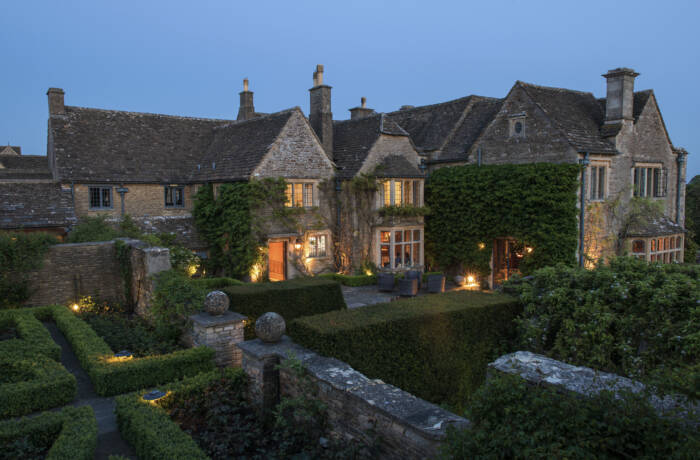SWEDEN IS CELEBRATING ITS OWN, UNIQUE GASTRONOMIC CULTURE LIKE NEVER BEFORE, AS Caroline Davies DISCOVERS ON A TOUR OF THE CAPITAL
Sweden is going back to its own. No longer satisfied with following the dictates of the French, the demands of the Spanish, the inventions of the Americans, Swedes are making a stand. Organic, traditional, simple, smoked, foraged and served, the Swedish food movement is embracing its homegrown tastes and getting its hands dirty. In more than one way, they are going back to their roots.
My visit to Sweden starts in twilight, at 3pm in the afternoon on a winter’s day. By the time my friend Rory, a discerning foodie, and I arrive in the city known as the “Venice of the North”, night has fallen. We bumble our way through the old town streets of Gamla stan, pausing to take in the view across the lakes, ornate pristine facades and street lights reflected in the water, or to peer past the curtained covered windows of cafes promising bowls of hot chocolate.
At the unlikely location of a motorway junction, we find our first stop. Strömmingvagnen, the herring stand, is the Swedish equivalent of a burger van. For over 20 years, the small trailer under a large golden fish has served herring in different forms to late night snackers and adventurous tourists. Ravenous from the journey, we examine the faded images displayed behind the counter and opt for rye bread, gravalax, dill and herring. Warm, gooey, salty and sweet, it is impossible to eat neatly and without noises of appreciation. Hands still a little sticky, we head for our hotel.
Hotel Rival, owned in part by Benny Andersson of Abba fame, is a converted cinema. The huge theatre, filled with 700 red velvet covered seats, is still used for screenings – Abba, the movie was premiered here – theatre productions and comedy nights. On performance evenings the foyer and bar are lively and the hotel has more spirit than most. Swedes love their coffee shops, a welcome escape from the winds that whip across the waterways, and Hotel Rival’s cosy art house style cafe tucked in the corner is a good spot to grab something smothered in cinnamon.
Each room is decorated with a wall sized print of a famous golden moment in cinematic history, a teddy bear and, of course, an Abba “The Greatest Hits” Album. Unsurprisingly, the sound system is not only crystal clear, but available in a variety of guises. If you haven’t had enough after singing along to “Dancing Queen” in the shower, you can request a speakerphone pillow from the menu and allow Benny, Agnetha, Björn and Anni-Frid’s dulcet tones to sing you to sleep. Buoyed by the burst of Swedish pop, we head out for our first taste of the food.
Volt is discreet. Situated on an elegant street in Ostermalmstorg we walk past it a couple of times before noticing that the clean framed front with elm branches in the window is the entrance. The decor – black carpet with white walls, the occasional pencil sketch hung on the wall – sounds stark, but is surprisingly relaxing, even comforting. Perhaps it is the quiet friendliness of the staff, who are so closely involved in the restaurant they pick everything from the art on the walls to the berries used in the tea at the end of your meal, that makes the restaurant feel familiar. Their music choices, which sounds as though they should be the soundtrack to an indie film, mummer in the background. Brass pipes cross geometrically along the walls with the occasional tap, used to refill the jugs with icy cool water.
The six course tasting menu, paired carefully with wine from Germany and France, focus on in season ingredients. Plates are balanced, but flavoursome with interesting pairings; smoky tinges are encouraged but not dominant, berries present but used sparingly. The Normandy cider, made only from fallen apples from a Michelin starred producer was a confident match with the cheese plate from local farms. With understanding and careful delivery, the menu wins even initial sceptics round.
“This place is one gravedigger short of Elsinore.” Rory says as we wander the isolated path towards the nursery gardens in Djurgården.
There is something Hamlet-esque about the Rosendals Trädgård in winter. Black mud sucks in the green tendrils of the grass and stains the solid grey boulders, silver birches hold cawing ravens. The bright light of daytime cuts the outlines of the surroundings into clear focus, so that we can see a horse drawn cart dragging its way through the mud in the distance with distinct clarity. We come across an art installation, the words “this is the corner of a larger field” written in swirling handwriting, created in white wire 10ft long, its stand planted solidly in the marshy ground giving the impression that it has been scrawled across the landscape.
The gardens are in the stately home of Rosendal palace. An organic haven, they grow seasonal produce for local restaurants and their own cafe, an expansive, steamy greenhouse with painted blue picnic benches laden with plates of Swedish biscuits and rosehip tea. In summer the gardens are full, but in the colder months, the cafe is filled with dog walkers and knowledgeable foodies. It is a curiosity, not quite bleak and not quite twee. We wander the garden’s paths past artistic bamboo structures and carefully pruned topiary to find a locked greenhouse, empty but for a leaf strewn dinner table, decorated for a dinner party that never came or is perhaps yet to arrive.
Henrik Norström is viewed as the pioneer of the Swedish food movement. Formerly a chef at a Michelin starred restaurant in central Stockholm specialising in French and Spanish cuisine, Norström decided that he was tired of meals dominated by flavours from other countries. He wanted his dishes local. In 2003, he opened Lux, a converted staff canteen for the Electrolux company, overlooking the lake on the small island of Lila Essingen. In 2004, they won a Michelin star.
“From here you can see the changes in the season,” he says. “If you have a restaurant in the city you have your four walls and you cannot see if it’s summer, winter, autumn or spring.”
Even a trained eye might find it difficult to spot the distinction between each of Norström seasons; there are 16. He is an innovator in tune with his subject.
“If you came back here this time next year there would be different items on the menu,” he says. “I use the same produce, but I never go back and use old dishes.”
Over the past decade Norström has developed a relationship with each of his suppliers, be they the fisherman, apple growers or reindeer farmers in the northern reaches of Sweden. Not unlike its owner, the restaurant is elegant and understated; the focus is on the food and a lifestyle, not brash gimmicks.
Back in central Stockholm, Swedish restaurants are fast becoming a la mode. With the food’s hunter gatherer ethos, some restaurants have adopted a macho edge. Ekstedt is bold. Red brick walls, black granite surfaces, bare light bulbs and a scorching fire behind wisely placed glass barrier, this is a hearty restaurant. Dishes are smoked, sizzled and grilled at the flame before being prepared by chefs in leather aprons at the central table and presented carefully on slate plates and wooden charred slats. The food is rich and creamy, the meat tender and the flavours strong. Butter soft reindeer meat, baked in ember and served with truffle proves a highlight, and their lemon ice cream with smoked almonds and salty caramel mixes textures well. The chef and creator behind it, Niklas Ekstedt, researched traditional methods to give his food the authentic Swedish edge; you can certainly imagine that their five-course tasting menu would sustain you through a long winter.
Full to the brim and as it is our final night in the city, we wrap up and meander through the old streets of Gamla stan past churches and narrow passages. Heading for home, we find ourselves in front of the big golden fish over the small trailer. We pause. There is always a little room left for herring.
Volt: restaurangvolt.se
Ekstedt: ekstedt.nu
The Rival Hotel: rival.se
Info: visitstockholm.com












